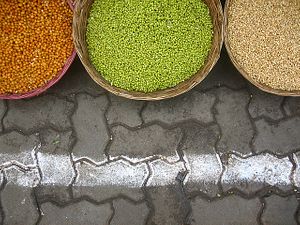The relationship between Naypyidaw and Delhi is not smooth sailing, despite the recent visit of Myanmar military officers to India. Naypyidaw’s announcement about not setting up a trading zone at the Indian border, due to a lack of basic infrastructure and low trading volume, ends the series of negotiations between India and Myanmar for border trading. Although the India-Myanmar border is more than 1600 kilometers, border trading is still a castle in the air, as Myanmar needs infrastructure upgrades.
Three weeks after this announcement, India imposed a restriction on importation of pegon pea, toor dal, urad and moon dal. This restriction directly affects the Myanmar, with over 700 tons of pea and dal, approximately worth $500 million, now holding at warehouses. Although the trading guild informed the government of negotiations on the August 8, Naypyidaw’s diplomatic attempts on securing a safety net seem to be failing. This commodity represents approximately four percent of total export from Myanmar.
India is not the only country to impose restrictions on the import of agricultural products. China also restricted rice and sugar importing from Myanmar; however, commodities are smooth flowing through border trading. There may still be border trading along the Myanmar-India border and Tamu trading post, but dal is already a surplus commodity in India and the competition may tight for imported dal.
In addition to trading, negotiations on the deportation of Rohingya to Myanmar are also a point of contention. India’s plan to deport 40,000 Rohingya to Myanmar drew outcries not only from the United Nations and human rights groups but also ultra-nationalists in Myanmar. Task forces have been organized to move the deportation forward, through negotiations between Naypyidaw and Delhi may still continue.
During the recent meeting between the Arakan National Party (ANP) and the Tatmadaw, the ANP requested a Bengali free zone. India is also re-examining the Free Movement Regime (FMR), due to recent reports submitted to the Home Affairs Minister. The India Intelligence Agency stated that the smuggling of light arms, drugs and counterfeit currencies have been spotted along the border. Although these illegal activities have been reported for decades, formation of the committee to review FMR is significant.
Delhi’s competition with Beijing over Arakan lags far behind. The Kaladan Multimodal Transportation Project and discussions on linking the port of Sittwe with the inland waterway seems a long way from happening, Myanmar needs resources and the ongoing situation in Arakan may hinder the process. Meantime, Beijing is investing in projects to improve the Sittwe–Kunming route.
Delhi-Naypyidaw relations may fall short, but India has improved relations with Tatmadaw, even with some turbulence related to the Naga insurgency. Over 200 Myanmar military officers have been trained in the medical, airforce and navy fields in India. In addition, Myanmar has acquired rocket launchers, night vision systems, radar and engineering equipment, including $37.9 million worth of torpedoes, from India.
The success of the Act East Policy is still a long shot for India. Although India may have won the heart of the Tatmadaw over Beijing, this does not mean that it is all hands on deck for Myanmar. The dramatic moments with Naypyidaw over the course of the past three months has created bumpy relations. This may further push Naypyidaw toward Beijing. If India loses Myanmar, the next domino will be the Indian Ocean. Momentum of the Belt and Road Initiative may end India’s East Act Policy like Obama’s pivot to Asia.
Amara Thiha is the Asia Foundation’s 2017 William P. Fuller Fellow in Conflict Resolution and a visiting fellow at the Stimson Center. He previously worked in the Joint Ceasefire Monitoring Committee and the Myanmar Peace Center. The views and opinions expressed here do not necessarily reflect the policies or positions of the Asia Foundation and Stimson Center.

































